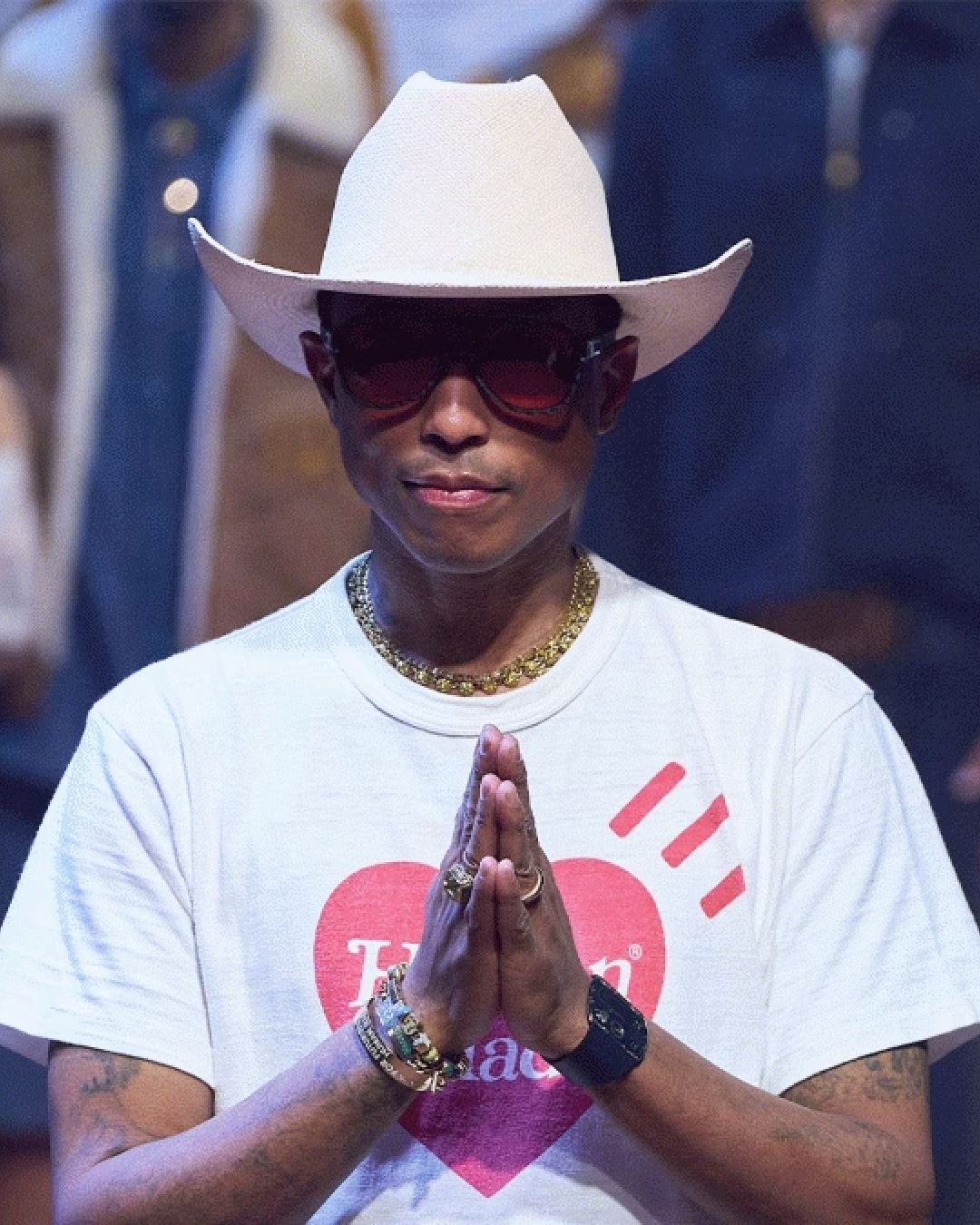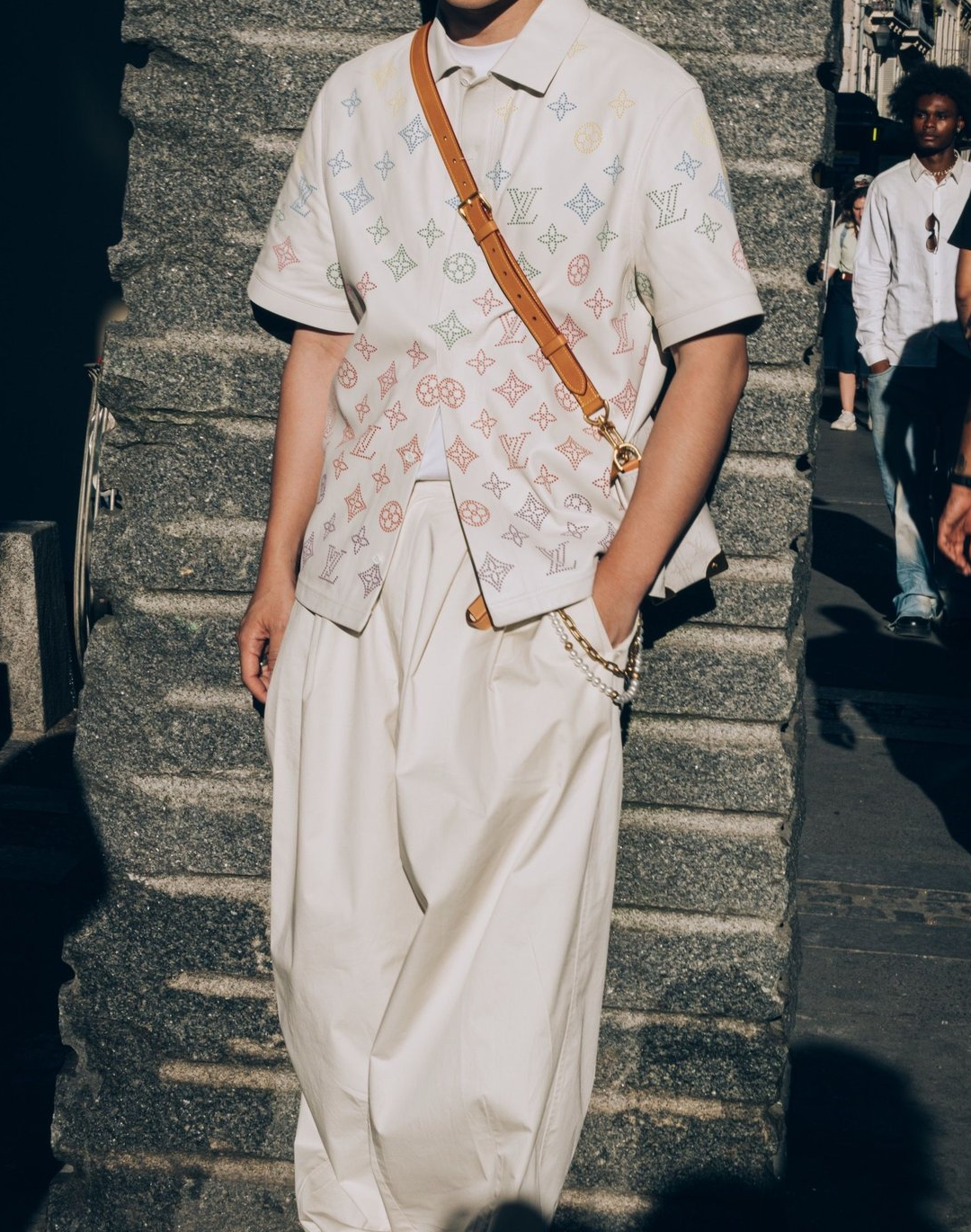
The unstoppable rise of brand curators The thin line between collaborations, archives and curatorships
Between 2018 and 2019, as Karl Lagerfeld became increasingly aware of the trends emerging among defectors from traditional luxury, he enlisted Pharrell Williams to design and sell a double-C sneaker — these collaborations, the most sophisticated see-now-buy-now storytellers, were more refined than a Meta algorithm and once dominated the world of streetwear. Just two years prior, Louis Vuitton announced its collaboration with Supreme, while Helmut Lang introduced the editor-in-residence format by hosting Shayne Oliver as the first guest designer. Those stories and viral products, long before their official release, at some point ceased to be interesting and functional for two reasons: first, the collaboration tactic became a linguistic template translated into the language of fast fashion; second, the economic crisis and the post-pandemic world altered their characteristics. The emergence of quiet luxury, in particular, reiterated a concept that we probably had little clarity about: luxury and fashion can be two completely different things, two vessels not always communicating. If luxury is about exclusivity and creativity, marrying the latest vision of Demna as evident in Balenciaga's FW24, we can envision an industry willing to give more and more space to curators?
The Cases of Jean Paul Gaultier, Dolce & Gabbana, and Moschino
In 2020, Jean-Paul Gaultier announced the decision to step back from the scene, choosing season after season spokespeople for his suggestive obsessions: Glenn Martens, Chitose Abe, Haider Ackermann, or Simone Rocha, to name a few of his flash heirs, were curators of sailor-striped sweaters, concise corsetry, and print verve. Although the enfant terrible of fashion had left the ready-to-wear world in 2014 to focus exclusively on Couture, «continues to convey his energy, creativity, and savoir-faire to his team, and his celebration of collections alongside guest designers is his final endorsement,» said Marc Puig, president and CEO of Puig (the Catalan group that acquired the majority of the French brand in 2011), to WWD a few months ago. Gaultier, who invented fashion long before it became as hyper-sophisticated a system as today's, always played with blended formulas between clothes and spectacle – the narrative expedient of the guest designer should be interpreted as a recreation process that deciphers an archive that would otherwise remain amorphous. If a fashion curator rereads the production of creatives active on various fronts, providing a retrospective of their work, Jean-Paul Gaultier opened the doors of his archive, transforming it into a Couture hub. Not only that: realizing the success of collaboration formats, the French brand decided to further expand its user base by turning to stylists like Lotta Volkova, who curated a 2022 release of naked dresses and baby doll gloves.
At Dolce&Gabbana, archive curation, dating back to a period between 1987 and 2007, was entrusted to Kim Kardashian, who was given the stage of the SS23 collection: 85 pieces selected by her in lace and lingerie embellished with crystals, preceded by a video in which the celebrity eats pasta against a black and white background. For Moschino, in the immediate post-Jeremy Scott separation period, the SS23 collection became the pretext to revisit Franco Moschino's archive on the occasion of the Italian brand's 40th anniversary: Carlyne Cerf de Dudzeele, Katie Grand, Gabriella Karefa-Johnson, and Lucia Liu were the stylists called upon to celebrate the clothing production dating from 1983 to 1993 (the year of Franco Moschino's last collection before his passing) responding to the claim "there is no freedom without chaos." 40 years of love, rather than filling the void left by the absence of a flesh-and-blood creative director, was a prelude curated by 4 stylists searching for Moschino in the post-fashion era. On the streetwear front, however, the most interesting experiment was conducted by Kiko Kostadinov and ASICS: beginning as a collaboration back in 2016, when the young designer had just graduated from Central Saint Martins, it ended up taking the form of a brand curation in every sense. Starting with the release of the UB1-S Gel-Kayano 14 model, the Kostadinov Studio thus circumvented the productive and temporal limits of a collab that adheres to the criterion of "popular designer x established streetwear brand," developing new silhouettes on behalf of ASICS.
Beyond what we might define as curations of a purely commercial nature, we can trace a train of thought that integrates art into the development process of a collection, even including retail visual. Bottega Veneta, in this type of scenario, moves without hesitation: in 2023 with Vieni a Vedere, the Italian artist Gaetano Pesce was entrusted with the curation of the Montenapoleone store, transforming it into a resin and canvas installation - a cave with an anthropomorphic silhouette - containing two special edition bags, My Dear Mountaineers and My Dear Prairies. Following the same train of thought, Jonathan Anderson of Loewe has moved and continues to move: in November 2023, to celebrate the brand's 50th anniversary in Japan, the Omotesando store in Tokyo honored a series of artists including Anthea Hamilton, with whom Anderson has been collaborating since 2018. «In the next 10 years, I think fashion and art will come closer and closer together because I'm convinced that both will start relying on each other for advertising and endorsement,» explained the designer to Luke Leitch. It is in this creative methodology that Crafted World fits, the first major exhibition on the Loewe universe that has just debuted in Shanghai and will be on tour, curated directly by Anderson. Even Miu Miu, in its constant and obsessive search for contemporaneity, has enlisted multimedia artist Cécile B. Evans as curator of video installations - MP4 extensions of the FW24 collection narrative in the form of a fashion film where the protagonist Guslagie Malanda is a simultaneous translator in an apocalyptic parliamentary chamber where memories are the last refuge. «Some things don't exist without what they contain,» Evans told WWD, reflecting on the intimate relationship with our technological devices.
The latest season of this Paris Fashion Week has transformed set designs into contemporary curations: Acne Studios gave new life to recycled tires by turning them into armchairs thanks to Estonian artist Villu Jaanisoo, just as Courrèges placed at the center of the show an optical white moving floor directed by Rémy Briere. These curations, ranging from commercial collaborations to more elaborate set designs, only reflect on the creative relationship between time and the archives of fashion houses, placing them in an area of intersection between branding, evocation, and interrogation. Interrogation, which more than responding to the hype generated by the announcement of a collaboration between brands, becomes a soft power tool for luxury brands and a deeper form of affiliation for their customers. The question at this point could be this: is brand curation destined to become the new commercial lever after the nostalgia and drops we are accustomed to?












































